Your garden soil is made up of a complex mixture of living organisms, minerals and organic material. In my last article, I showed you how you can create awesome gardening soil by testing your current soil and amending it appropriately. This should give you great results for a year maybe two, but as time goes on your plants will start to deplete the nutrients in the soil. This is why you have to continually feed your soil.
So the question remains, “What do I feed my soil?” The answer: Organic Material. Life primarily feeds off of life, and soil life primarily feeds off of decaying life. Fallen leafs, coffee grounds, kitchen scraps, and manure are just a few examples. The best thing to do is to continually add organic material to your garden. You can do this with compost and compost tea or by planting and tilling in a cover crop (which I’ll cover in my next article). For now let’s focus on another technique, mulching.
What Can Be Used As Mulch?
When I first started gardening I thought that compost and mulch were the same thing. I later learned that they are different things. Mulch is a material that you shred up and put on top of your soil. Compost is decomposed organic matter. Mulch does a number of things for your soil. It will hold the moisture in, improve the structure, help prevent weeds, and if organic, breaks down over time adding nutrients to your soil. The question is, “What can you use as mulch?” Here is a list of mulches from best to worst.
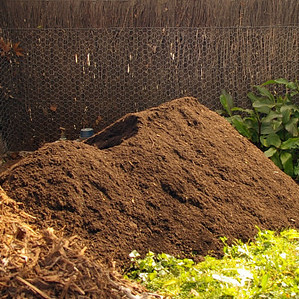 Compost – 1 inch – yes finished compost is just about the perfect mulch. I think this is were I got my confusion from. You are going to want to add compost at least once a year to feed your soil and plants anyway, so using it as mulch is just that much easier. Keep in mind though that it will not help prevent compaction, so I would only use it in say a raised bed garden where you won’t be walking on it.
Compost – 1 inch – yes finished compost is just about the perfect mulch. I think this is were I got my confusion from. You are going to want to add compost at least once a year to feed your soil and plants anyway, so using it as mulch is just that much easier. Keep in mind though that it will not help prevent compaction, so I would only use it in say a raised bed garden where you won’t be walking on it.
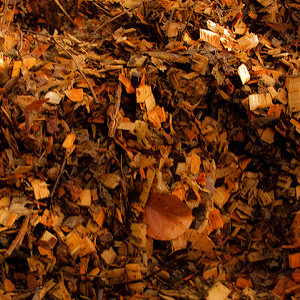
Dried & Shredded Leaves – 2 inches – According to garden expert Mike McGrath from the “You Bet Your Garden” podcast, “Shredded leaves make an excellent mulch—and the earthworms that colonize the soil underneath the leaves will feed your plants and aerate your compacted soil for free!” Tree leaves contain 50% to 80% of the nutrients a tree extracts from the soil and air during the year. Not only are they full of nutrients, the also have the right texture, and break down well. Just make sure they are shredded well and you don’t layer them too thick or they will become matted and prevent rain from reaching the soil. They also don’t help with compaction so make sure you don’t walk on them. You also want to put some sort of trim around the area because shredded leaves tend to blow around in heavy winds.
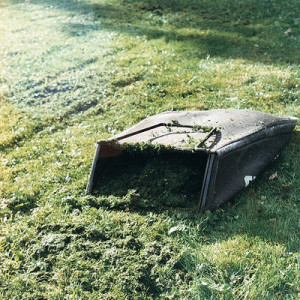 Dried Lawn Clippings – 2 inches – Dried grass clippings from an herbicide free lawn are also great, but you must make sure they are dried before you use them. Acording the The Rodale Institute dried grass clippings are the best mulch. They are a good source of nutrients, they hold the moisture well and look the great, but they do tend to blow around in the wind. Grass clipping will be high in Nitrogen, so be careful not to use this on flower crops. Too much nitrogen can inhibit flowering. Honestly, you should probably leave your grass clipping in your lawn to feed it.
Dried Lawn Clippings – 2 inches – Dried grass clippings from an herbicide free lawn are also great, but you must make sure they are dried before you use them. Acording the The Rodale Institute dried grass clippings are the best mulch. They are a good source of nutrients, they hold the moisture well and look the great, but they do tend to blow around in the wind. Grass clipping will be high in Nitrogen, so be careful not to use this on flower crops. Too much nitrogen can inhibit flowering. Honestly, you should probably leave your grass clipping in your lawn to feed it.
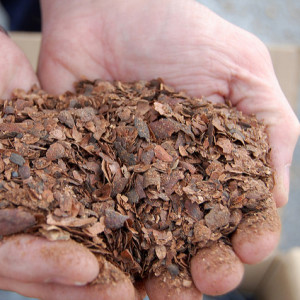 Cocoa Shells – 2 to 3 inches – cocoa shells are prepared through a roasting process, which makes them sterile and great for mulch. They also contain nitrogen, phosphate and potash (potassium). Cocoa shells are also slightly acidic at 5.8 pH, so they will help keep your pH down. The best part about using them as mulch is that they are dark and have a sweet chocolaty aroma. However, cocoa mulch is not recommended for dog owners, because the smell is attractive to them and the theobromine in the shells is toxic to dogs. It is also hard to find; usually only available near processing plants.
Cocoa Shells – 2 to 3 inches – cocoa shells are prepared through a roasting process, which makes them sterile and great for mulch. They also contain nitrogen, phosphate and potash (potassium). Cocoa shells are also slightly acidic at 5.8 pH, so they will help keep your pH down. The best part about using them as mulch is that they are dark and have a sweet chocolaty aroma. However, cocoa mulch is not recommended for dog owners, because the smell is attractive to them and the theobromine in the shells is toxic to dogs. It is also hard to find; usually only available near processing plants.
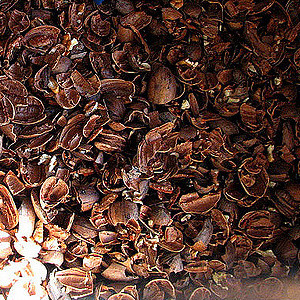 Pecan Hulls – 2 to 3 inches – makes great mulch too. They may be harder to get a hold of, but they look great. They also break down slower, so you don’t have to re-apply as often.
Pecan Hulls – 2 to 3 inches – makes great mulch too. They may be harder to get a hold of, but they look great. They also break down slower, so you don’t have to re-apply as often.
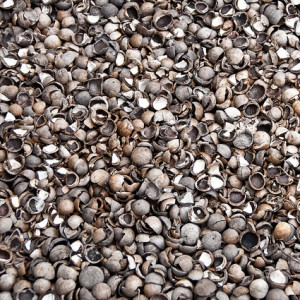 Macadamia Shells – 2 to 3 inches – Like Pecan Hulls, they may be harder to get a hold of, but they look great. They also break down slower, so you don’t have to re-apply as often.
Macadamia Shells – 2 to 3 inches – Like Pecan Hulls, they may be harder to get a hold of, but they look great. They also break down slower, so you don’t have to re-apply as often.
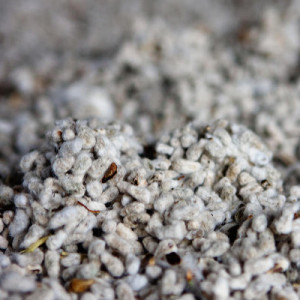 Cottonseed Hulls – 2 to 3 inches – Locally available, cotton hulls work well for mulch. They are also acidic, so they could be used to help lower your pH. However, they are light weight and tend to blow around in the wind.
Cottonseed Hulls – 2 to 3 inches – Locally available, cotton hulls work well for mulch. They are also acidic, so they could be used to help lower your pH. However, they are light weight and tend to blow around in the wind.
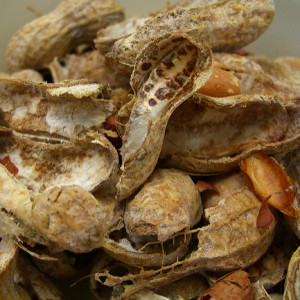
Peanut Shells – 2 to 3 inches – also a great mulch, but it is linked to Southern blight and Southern root-knot nematodes in The South, so if you live in those hot and humid areas do not use peanut shells. However, for all of you in The North or out West, you should be fine.
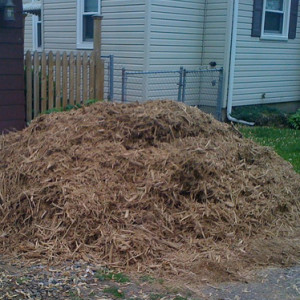 Pine Straw or Pine Needles – 2 to 3 inches – if you can get over the sharp tips of the pine needles, they make a great mulch and are very attractive. They are widely available especially in the South and break down slowly. Pine needles are slightly acidic, but this is a good thing. They won’t make your soil overly acidic, that is a myth.
Pine Straw or Pine Needles – 2 to 3 inches – if you can get over the sharp tips of the pine needles, they make a great mulch and are very attractive. They are widely available especially in the South and break down slowly. Pine needles are slightly acidic, but this is a good thing. They won’t make your soil overly acidic, that is a myth.
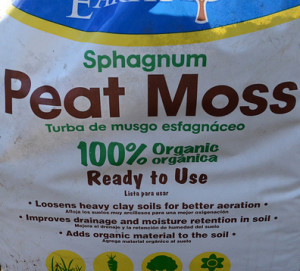 Peat Moss – 2 inches with a 1 inch layer of compost on top – Peat moss is highly acidic, so it is only recommended for use with strawberries, blueberries, hydrangeas, rhododendrons and azaleas. Peat moss by itself has a tendency to blow away in the wind and form surface cracks when it dries out, that is why we put the layer of compost on top.
Peat Moss – 2 inches with a 1 inch layer of compost on top – Peat moss is highly acidic, so it is only recommended for use with strawberries, blueberries, hydrangeas, rhododendrons and azaleas. Peat moss by itself has a tendency to blow away in the wind and form surface cracks when it dries out, that is why we put the layer of compost on top.
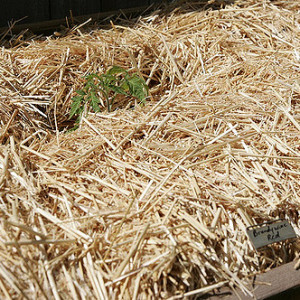 Straw – 2 to 3 inches – This is referring to straw not hay. Hay contains the seed heads and straw is just the stalks. Straw works as a mulch, but it is carbon-rich enough tie up the nitrogen in the soil as it breaks down and if it is not organically grown, it will have pesticides and herbicides all over it. It also attracts rodents that like to use it as bedding, which will then cause trouble in your garden. However, it is great at holding moisture, easy to find, and helps prevent compaction.
Straw – 2 to 3 inches – This is referring to straw not hay. Hay contains the seed heads and straw is just the stalks. Straw works as a mulch, but it is carbon-rich enough tie up the nitrogen in the soil as it breaks down and if it is not organically grown, it will have pesticides and herbicides all over it. It also attracts rodents that like to use it as bedding, which will then cause trouble in your garden. However, it is great at holding moisture, easy to find, and helps prevent compaction.
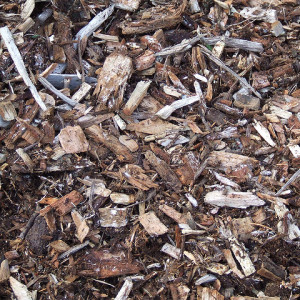 Wood Mulch – 2 to 4 inches – wood chip mulch, shredded bark, root mulch or dyed wood mulches (usually made of chipped-up pallets, old pressure treated wood, construction debris or other trash) are not good for gardens or planters near a house or drive way. In some areas wood chip mulches attract nuisance fungi, which throw projectile spores all over the place. I would only use these mulches if I were experimenting with growing mushrooms. Wood mulches also tie up the nitrogen in the soil as they break down, which can hinder the growth of your young plants. This is called nitrogen immobilization.
Wood Mulch – 2 to 4 inches – wood chip mulch, shredded bark, root mulch or dyed wood mulches (usually made of chipped-up pallets, old pressure treated wood, construction debris or other trash) are not good for gardens or planters near a house or drive way. In some areas wood chip mulches attract nuisance fungi, which throw projectile spores all over the place. I would only use these mulches if I were experimenting with growing mushrooms. Wood mulches also tie up the nitrogen in the soil as they break down, which can hinder the growth of your young plants. This is called nitrogen immobilization.
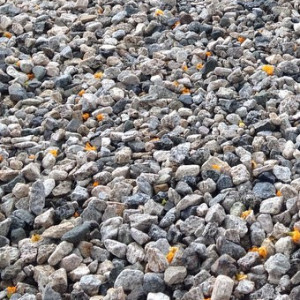 Rock – 1 to 2 inches – Yes you can actually use small crushed rocks as a mulch. This is really popular in the Southwest. It looks great, helps keep a steady soil temperature and works well. It is a little more pricey and handling it is not as simple as working with other mulches. It also does not add nutrients to the soil over time.
Rock – 1 to 2 inches – Yes you can actually use small crushed rocks as a mulch. This is really popular in the Southwest. It looks great, helps keep a steady soil temperature and works well. It is a little more pricey and handling it is not as simple as working with other mulches. It also does not add nutrients to the soil over time.
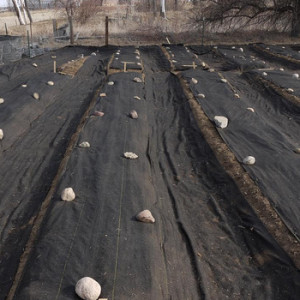 Synthetics – black plastic or landscape fabrics are available as well. Although they work great as a weed barrier and help hold the moisture in, they also repel rain water. They are usually black and used in the spring to help warm the soil.
Synthetics – black plastic or landscape fabrics are available as well. Although they work great as a weed barrier and help hold the moisture in, they also repel rain water. They are usually black and used in the spring to help warm the soil.
Which mulch should you use?
As you can tell, each mulch option has its pros and cons. I suggest you use what you have available at a reasonable price.
Another Great resource:
A great set of charts showing different mulches and their pros and cons – http://extension.missouri.edu/p/G6960
Here are some things to keep in mind when applying mulch:
- Add mulch in the spring and the fall to a depth of 2 to 3 inches and no more. Any more than that tends to prevent rain water from getting down to the soil. However, if you are like me and don’t get hardly any rain, you can consider putting up to 4 inches of mulch to really prevent that moisture from escaping. Now keep in mind, if you do this, you have to make sure your watering lines are under the mulch. Use a drip emitter, pvc system or soaker hose.
- Keep mulch away from the trunk of your trees. The bark of your trees needs to breath and dry out. If the bark stays moist, it will become soft and susceptible to disease, insects, or vermin, which will kill your tree. Make sure you can see that root flare.
- If you use leaves, make sure to shred them. Otherwise they will mat together and prevent rain from getting to your plants.
Grow Your Own Mulch
To help cut costs, I suggest you grow your own mulch. You can grow deciduous trees for their fall leaves or other bushy nitrogen fixing plants. Here is a list of plants you can us as mulch.
A pesticide and herbicide free lawn – you can set the grass clipping aside until they dry, then you can use them as mulch. If you have extra, you can also add them to your compost pile.
Mulberry Tree – Mulberry leaves are a good source of Calcium.
White Ash – White Ash leaves are also a good source of Calcium. White Ash leaves also have a pH of 6.8. which will help keep your soil slightly acidic.
Hemlock Tree – Hemlock leaves are not a good source Calcium, but the leaves of the Eastern Hemlock have twice as much nitrogen as the leaves of the Red Maple.
Most of your fruit trees will drop their leaves in the fall as well and make great mulch.
Avoid these leaves:
Sugar Maple leaves have a pH of 4.30, so only use these leaves on acid loving plants like blueberries and rhododendrons.
The leaves of black walnut trees and eucalyptus trees contain a natural herbicide that may keep your garden seeds from germinating. Don’t use these alone, but they should be okay to use if they are only a small part of your shredded leaf mix.
Your Turn
If you aren’t already, get out there and mulch your garden. It will make your life easier by reducing the need for watering and pulling weeds. It was also help your plants grow stronger and healthier. When you are done, leave a comment below. Tell the community what your favorite mulch is and why?
For more organic gardening tips and a FREE copy of my book 221 Tips & Tricks from Master Gardeners Illustrated! subscribe here:
References
http://www.planetnatural.com/garden-soil/http://gardentherapy.ca/soil-food/
http://www.gardening.cornell.edu/factsheets/mulch/mulchland.html
http://www.gardensalive.com/product/do-trees-need-mulch–can-a-tree-survive-severed-roots
http://www.gardensalive.com/product/the-best-garden–landscape-mulches-you-can-buy
http://www.gardensalive.com/product/is-your-mulch-magnificent-or-miserable
http://www.gardensalive.com/product/how-to-use-peat-moss-wisely
http://www.gardensalive.com/product/what-do-compost-topsoil-humus-composted-soil-and-other-dirty-words-really-mean
http://www.gardeningknowhow.com/garden-how-to/mulch/using-cocoa-hull-mulch.html
http://archive.audubonmagazine.org/audubonliving/audubonliving0703.html
http://www.gardensalive.com/product/do-peanut-shells-make-good-mulch-or-compost/you_bet_your_garden
http://www.pinestrawadvice.com/
http://www.gardensalive.com/product/dont-confuse-straw-with-hay-or-hay-with-straw-what-about-straw-bale-gardening/you_bet_your_garden
http://aggie-horticulture.tamu.edu/earthkind/landscape/leaf-management-plan/
http://www.homesteadandgardens.com/mulches-types-uses/
http://www.bettervegetablegardening.com/types-of-mulch.html


